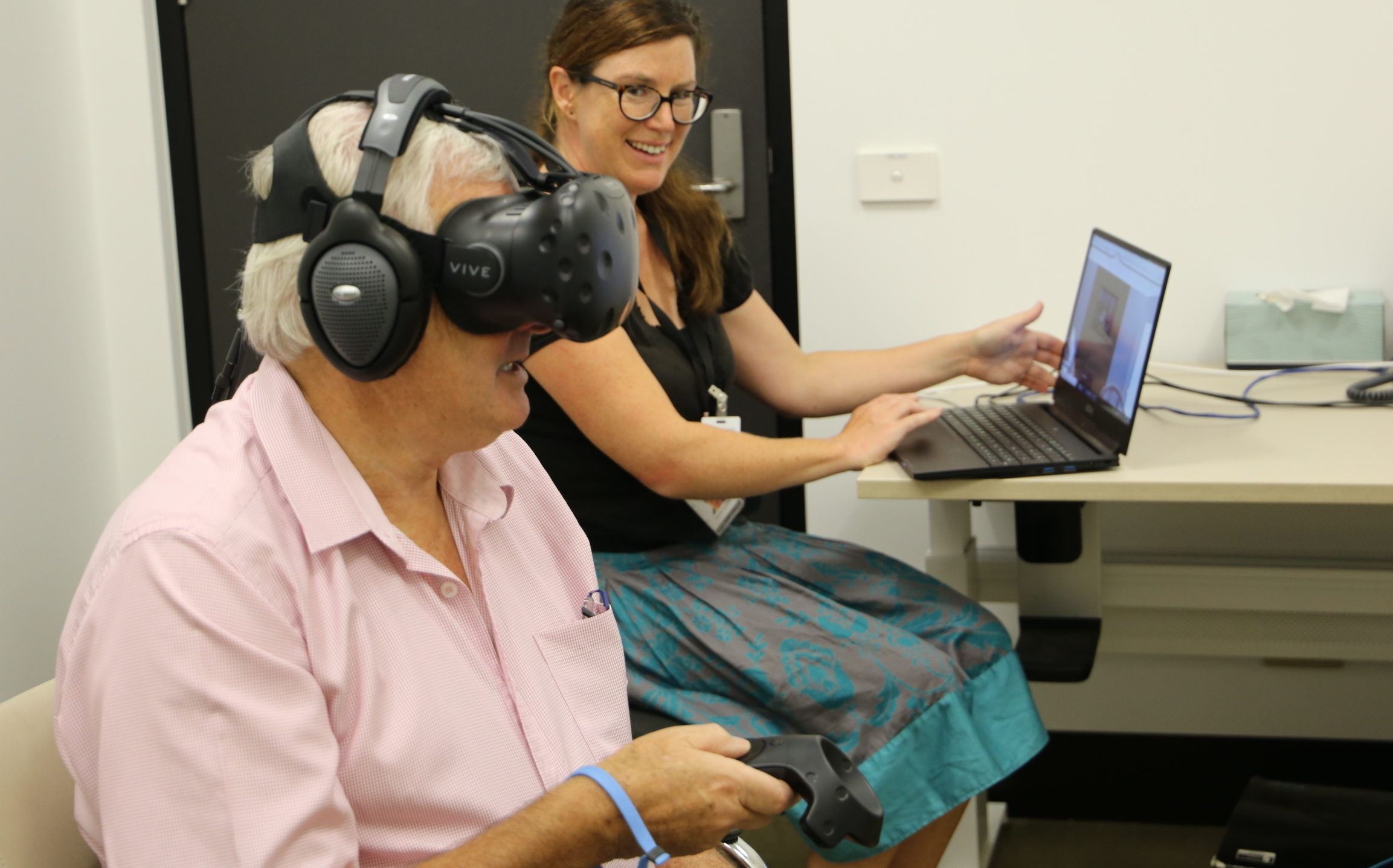In the study, participants use virtual reality to tour through patient hospital rooms with different types of architectural designs, including varying window views and levels of room occupancy. An armband monitoring heart rate and an activity monitor track how participants interact with the space.
“Through the use of real word research and pioneering technology, we hope to better understand how rehabilitation environments can contribute to cognitive and physical outcomes of people who have experienced a stroke,” explained lead researcher Michelle Shannon from The Florey.
 Left to right: Stroke survivor and study participant Tim McCartin using the study’s virtual reality technology with Florey researcher Michelle Shannon
Left to right: Stroke survivor and study participant Tim McCartin using the study’s virtual reality technology with Florey researcher Michelle Shannon
Models of rehabilitation care and hospital environments have remained largely unchanged over the last 30 years. The team at The Florey hope this novel study can bring a fresh approach to meeting the specific needs of care for stroke patients.
“We believe these study results can inform what is an ideal stroke rehabilitation setting to ultimately achieve better outcomes for patients,” added Shannon.
So far, 39 people who’ve experienced a stroke ranging from 18 to 81 years old, have taken part in the study, including Rosanna resident Tim McCartin.
Life for the former high school principal was impacted after he experienced two strokes only months apart in 2019. Mr McCartin faced significant challenges to his day-to-day life, including memory loss, reduced mobility and being unable to drive for 6 months. He has since made a remarkable recovery and considers himself very lucky.
“I hope that by taking part in the study and using the experience that I’ve been through, I can help provide the best care for other people who have had a stroke,” said Mr McCartin.
“It was very interesting to learn how much thought goes into the design of a hospital and to be able to contribute to that through this study”, he added.
News of the study was covered in The Leader newspaper.